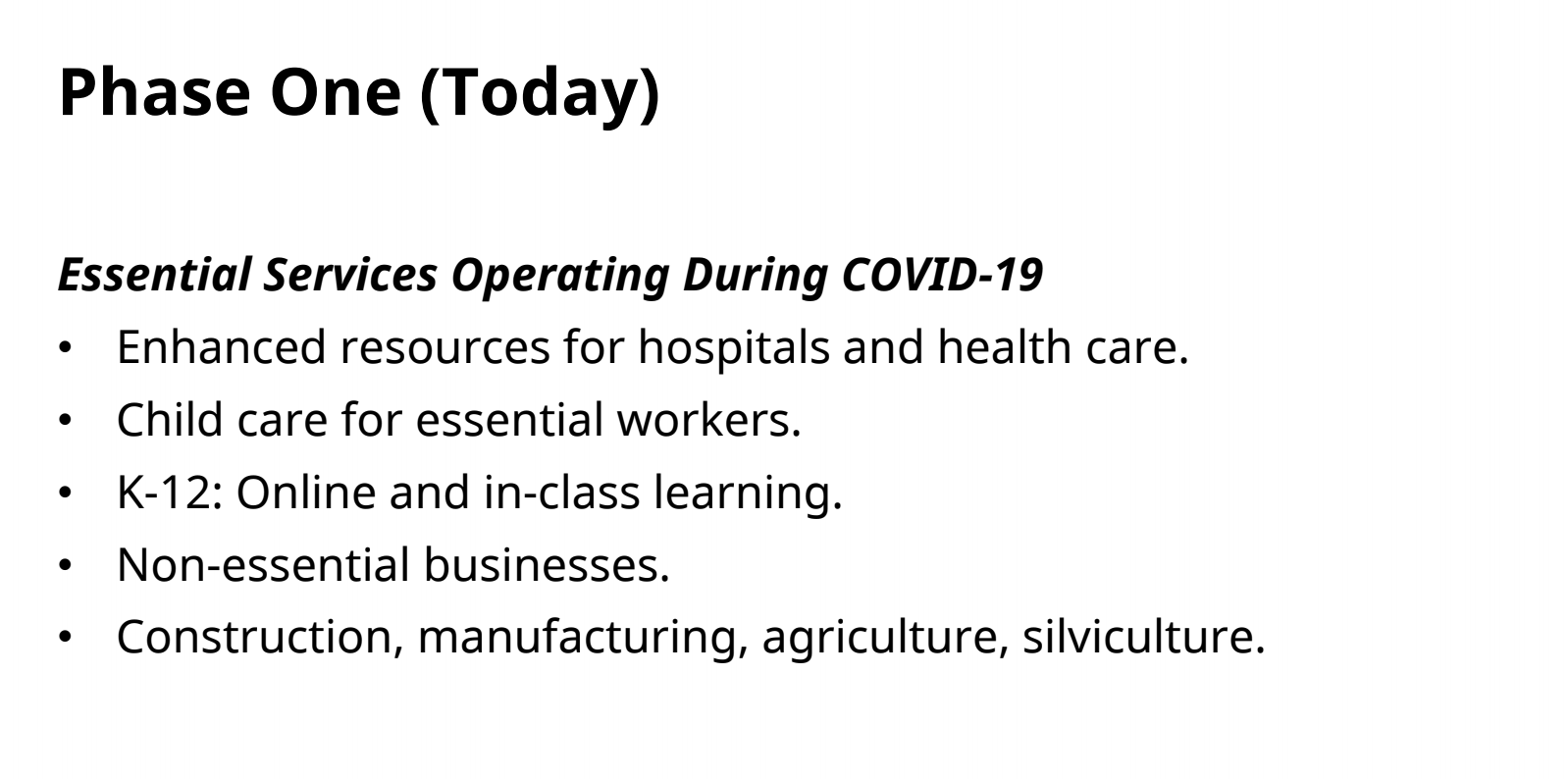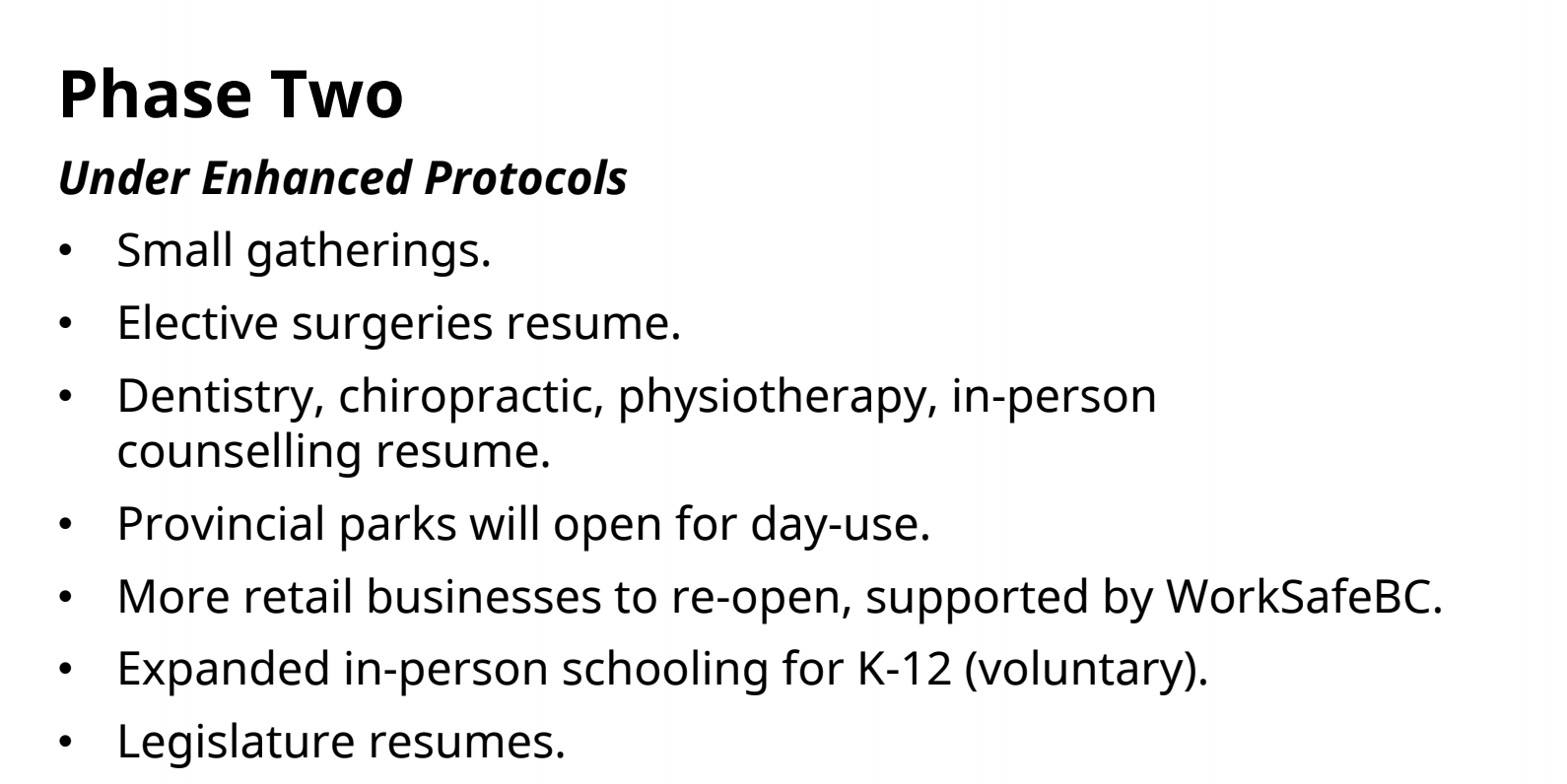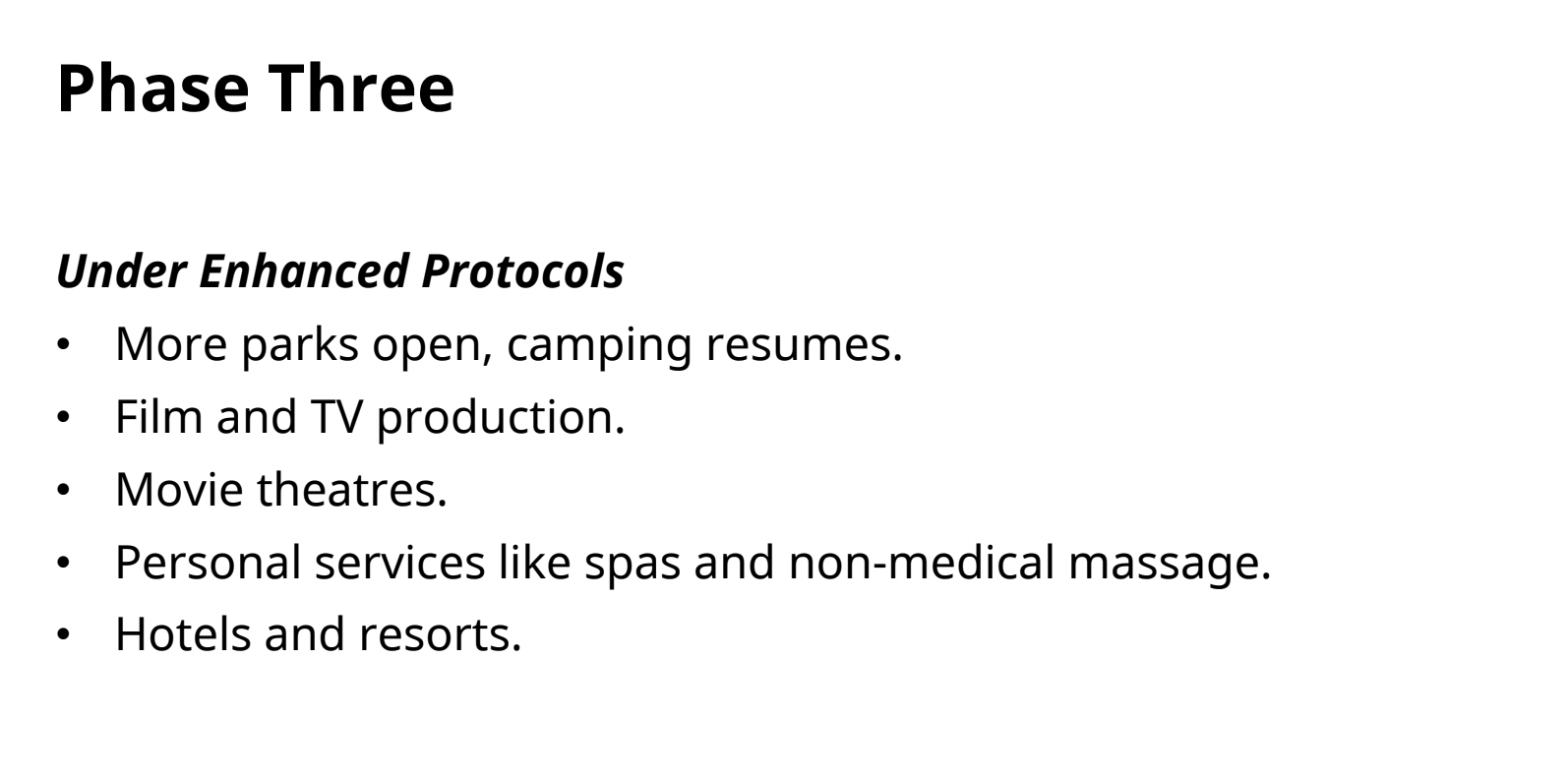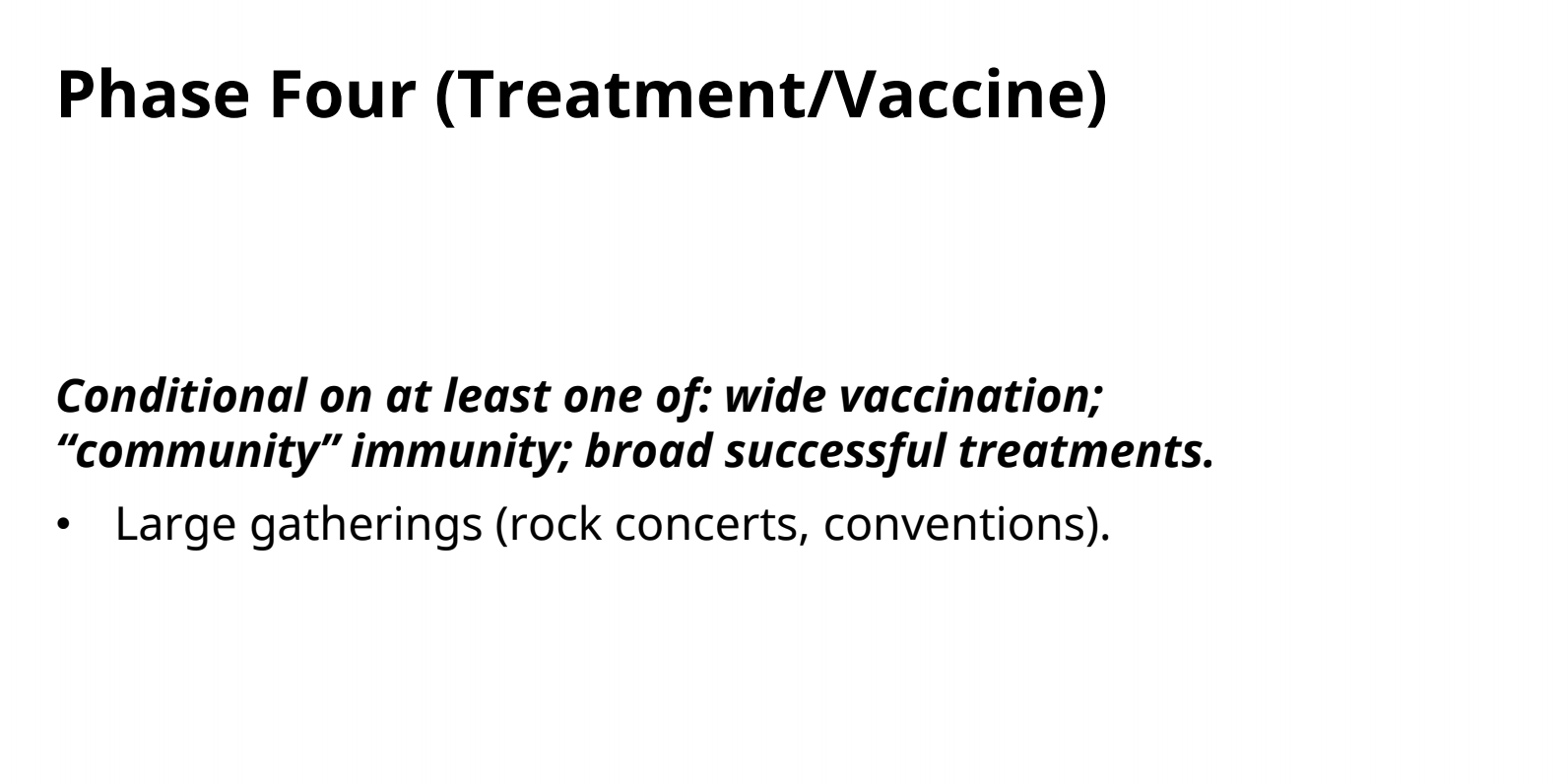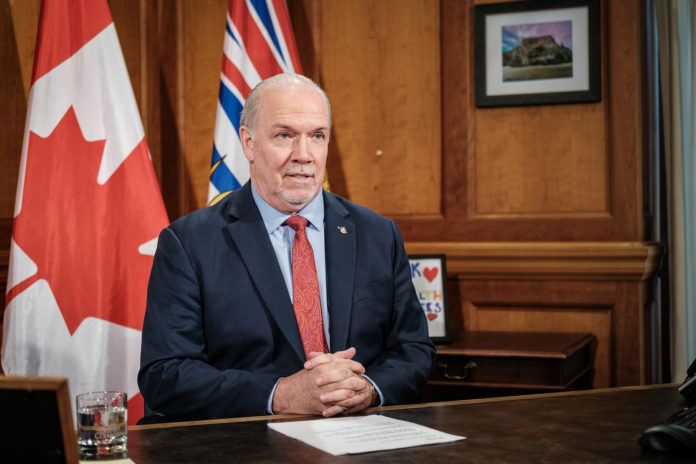In a long awaited announcement, the provincial government has released a set of guidelines and implementation details for increasing social interactions and restarting some economic activity in a safe manner during the COVID-19 pandemic.
After a continued flattening of new cases and a plateaued rate of deaths per day, B.C. is now moving into a phase where the economy and public life should be able to operate at 60 per cent of normal while still keeping a relatively flat transmission rate.
Unlike other provinces that are now restarting various sectors of their economy, B.C. does not technically have to “reopen” as most industries were never fully shut down to begin with.
Therefore in today’s announcement, the Ministry of Health has issued a series of guidelines on how to increase individual social interactions, as well as increase activity in the health care system, offices, retail stores, daycares, schools, universities, and sports camps.
Here’s a breakdown of what you need to know:
Expanding social circles
Come mid-May, people in B.C. can start to slightly expand their social circle beyond their households, and interact with around two to six people outside their immediate home.
As a policy, everyone is advised to refrain from socializing if they have symptoms of a cold, flu, or COVID-19 — this includes sneezing and coughing — until those symptoms have disappeared completely.
Families with members who are at greater risk, like those who are aged 60+ years, have a compromised immune system, or an underlying chronic medical condition, need to practice heightened vigilance while interacting.
When out in the community, everyone must continue to maintain physical distances and wear a non-medical mask when physical distancing is difficult to maintain.
Workplaces and offices
According to the Ministry of Health, two factors determine the risk of transmission at workplaces: contact intensity (how close you are to someone and for how long), and the number of contacts (how many people are in the same setting at the same time).
Workplaces are therefore required to minimize both factors by reducing the number of people that are in the same place for any period of time.
Clear guidance must be on hand to manage social interaction in common spaces, like kitchens, staff rooms, canteens, etc.
Where possible, offices are encouraged to allow people to work from home as much as possible. Otherwise, workplaces are asked to reduce contact by staggering shifts or work hours, asking teams to work virtually, and forgoing in-person group meetings as much as possible.
One of the main problems associated with the pandemic is employees going to work while ill for fear of losing wages.
Public health officials have continued to speak out against this practice, and provincial authorities are working to implement policies that oversee employers, making sure workers have access to paid sick days or options to work from home when they are ill. More announcements on this are expected in the coming days and weeks.
All workplaces will be required to increase their sanitization protocols and implement frequent cleaning of high touch surfaces.
The province is working with public health and WorkSafe BC to come up with a set of guidelines for various organizations and industries.
Retail stores
Most retails stores in B.C. were not ordered to close, but did so anyway to mitigate the risk of COVID-19 transmission in the absence of clear guidelines on how to safely operate.
Many of them have already started to reopen with certain extra health and safety measures in place, and stores are now preparing their proposals to help the province develop their guidelines.
The Ministry of Health has advised that retail stores should reduce line-ups by maintaining a higher number of check-out counters once physical plexiglass barriers are installed.
Stores are also encouraged to increase their hours of operation to reduce the density of people that can be inside at any given time.
Patrons should be provided signage or messaging to discourage them from shopping while sick or if they have symptoms of COVID-19.
Retail outlets should also consider requiring the use of basic non-medical masks among shoppers.
Hair salons, personal services, restaurants
Hair salons and personal services businesses like tattoo parlours, nail salons, etc., were some of the few businesses that were ordered to close by the provincial health officer.
Starting mid-May, those establishments can operate given they follow these guidelines:
- Provide messaging asking patrons to not use services if they’re sick,
- Reducing or eliminating wait areas
- Require appointments and bookings to manage the flow of customers
- Use of non-medical masks and maintaining distance between customers
- Using plexiglass barriers wherever practical.
Personal care businesses as well as restaurants have been inundating Dr. Bonnie Henry with their plans, according to her, which is how she knows those businesses have been preparing ways to safely reopen.
“I really really hope I can book a hair appointment after the middle of May,” said Dr. Henry.
Daycares, K-12 schools, and post secondary
For all levels of schooling, whether it’s daycare, K-12, or post-secondary, institutions are required to conduct routine symptom screening for students and staff.
Dr. Henry clarified that this does not mean taking temperature checks, but rather asking everyone how they are feeling each day.
Premier John Horgan clarified that students will not be required to go back to school this year, but schooling will be provided on a voluntary basis particularly for younger children. He also says there is no expected increase in in-class teaching until well after the May-long weekend.
The Ministry of Education is expected to make an announcement regarding how schools will reopen safely in the coming days.
Planning is under way for a full relaunch of the K-12 school system in September, with smaller class sizes, increased space between desks, frequent hand washing, and requiring non-medical masks for students when they participate in group activities.
More online classes and virtual learning options will also be developed over the summer, particularly for high school students.
There will be a clear policy in place for children, youth and staff who have symptoms of a cold, flu, or COVID-19. Anyone coughing or sneezing will not be allowed to go into the into or take part in extra curricular activities and sports.
Also for all levels of schooling, international students coming to B.C. will be required to self isolate for 14 days before attending classes.
For post secondary students, universities are looking into ways of enhancing the use of online and virtual learning portal for the coming school year.
Sports/Recreation and camps
Like all other industries, institutions, and sectors, youth and adults taking part in sports and recreation this summer will need to monitor their symptoms.
According to the Ministry of Health, low contact sports, especially those that take place outdoors, are considered safer, while high contact sports should not take place during the pandemic.
Staff and participants at higher risk of experiencing severe illness should not take part in recreational, sporting, or camp activities.
Other sectors
From mid-May onwards, the province is also focusing on rescheduling elective surgeries, and restarting medical services like dentistry, physiotherapy, Registered Massage Therapy, chiropractors, physical therapy, speech therapy and others.
Health minister Adrian Dix is expected to provide an update on a timeline for restarting these surgeries and medical services on Thursday.
Restaurants, cafés, and pubs are also being prioritized for reopening, given that they implement sufficient distancing measures.
Provincial parks will also be reopened for day use.
The province is taking a phased approach to increasing public and economic activity during the pandemic, which will be based on whether or not case rates continue to decline.
We are currently in the first phase of this reopening plan. Today’s announcement and the release of new guidelines launches phase two, which will begin after the May long weekend.
Phase three will be launched in the June – September period if COVID-19 case rates remain low and the curve stays flat, while phase four can only begin once there is successful treatment or vaccination or community immunity to the virus.
The four phases are as follows:
